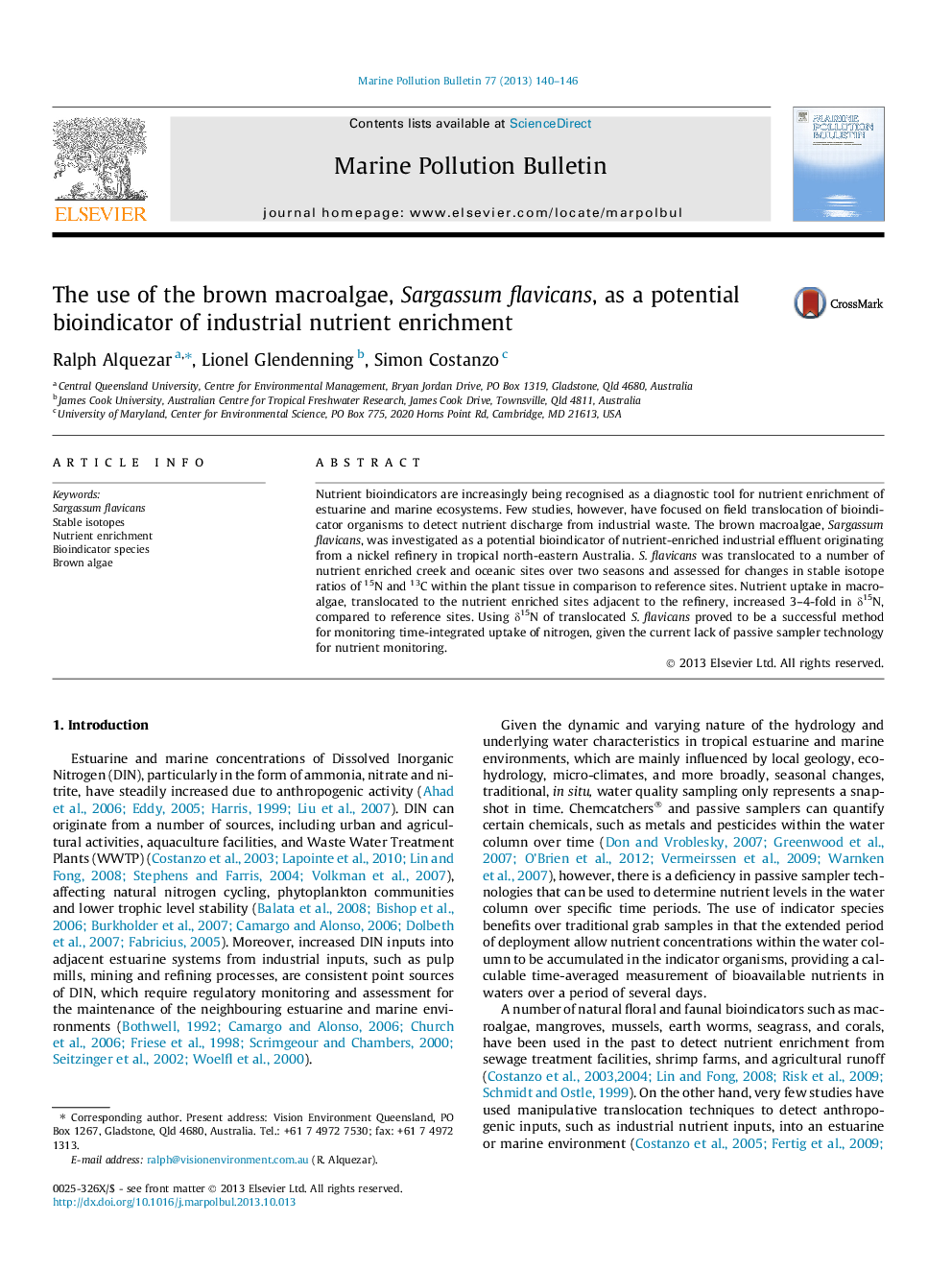| Article ID | Journal | Published Year | Pages | File Type |
|---|---|---|---|---|
| 6359284 | Marine Pollution Bulletin | 2013 | 7 Pages |
Abstract
Nutrient bioindicators are increasingly being recognised as a diagnostic tool for nutrient enrichment of estuarine and marine ecosystems. Few studies, however, have focused on field translocation of bioindicator organisms to detect nutrient discharge from industrial waste. The brown macroalgae, Sargassum flavicans, was investigated as a potential bioindicator of nutrient-enriched industrial effluent originating from a nickel refinery in tropical north-eastern Australia. S. flavicans was translocated to a number of nutrient enriched creek and oceanic sites over two seasons and assessed for changes in stable isotope ratios of 15N and 13C within the plant tissue in comparison to reference sites. Nutrient uptake in macroalgae, translocated to the nutrient enriched sites adjacent to the refinery, increased 3-4-fold in δ15N, compared to reference sites. Using δ15N of translocated S. flavicans proved to be a successful method for monitoring time-integrated uptake of nitrogen, given the current lack of passive sampler technology for nutrient monitoring.
Related Topics
Physical Sciences and Engineering
Earth and Planetary Sciences
Oceanography
Authors
Ralph Alquezar, Lionel Glendenning, Simon Costanzo,
